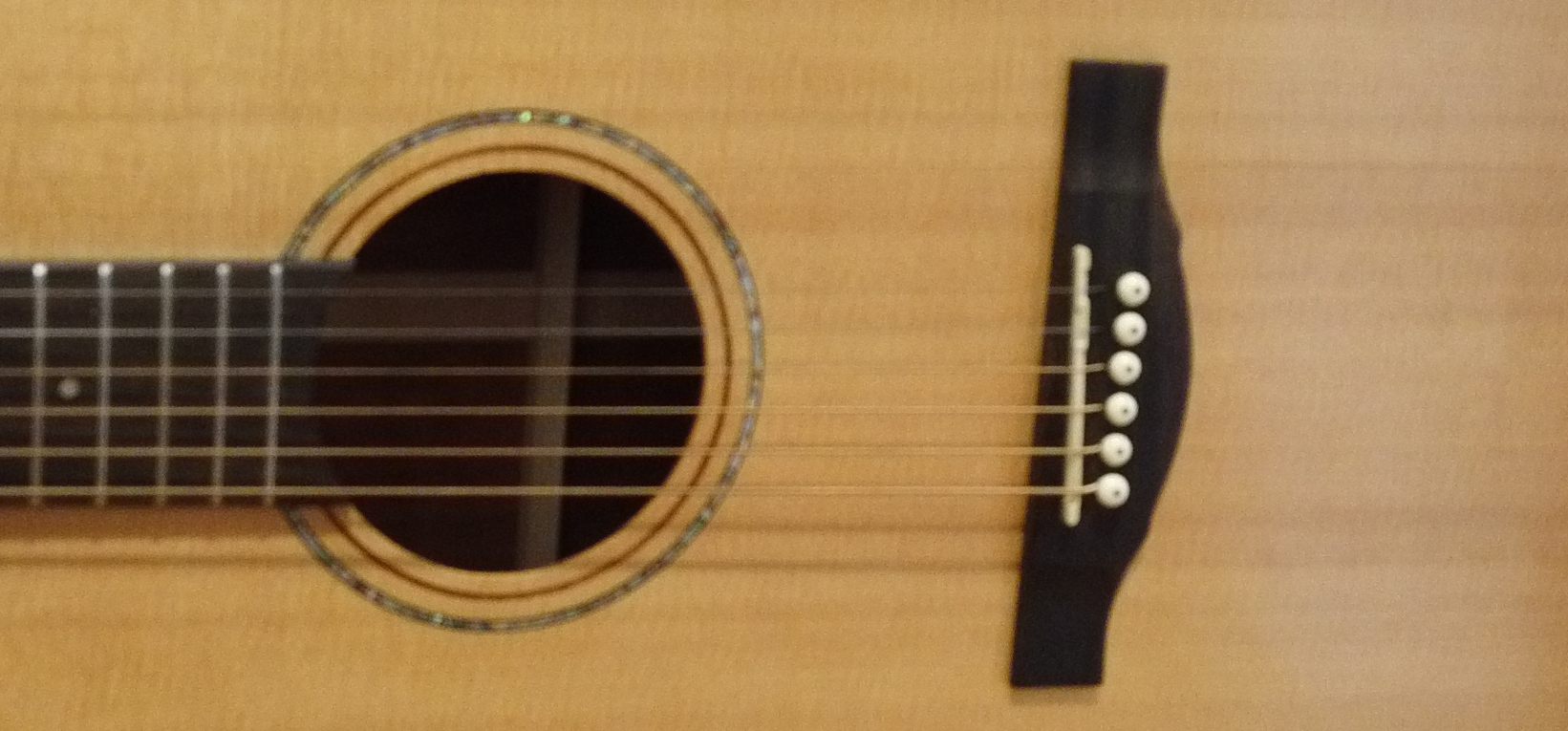Welcome to the wonderful world of guitar. Are you one of those sassy people who learned some music basics when you were young? Huh? You lucky devils …. Alas, there are some among us that still need a bit of learning to do. I’ve found that some people trying to teach music in the great outdoors make basic assumptions that make it challenging for a complete beginner. This blog outlines my first two weeks of the guitar learning process as a real ‘complete’ beginner. Ladies and gents, enter and enjoy my terrible guitar playing. …. what …. you want me to stop? Well, all you have to do is throw money at me and I promise I’ll stop playing … No ….. no. I’m lying. Did you forget. I’m from the internet.
The Before Time
Once upon a time in the time before time there was a guy who called himself an engine-ear. He tried and tried to learn the uke but couldst do naught but sigh in despair. For he was no musician. No sir-ee. An’ what arrived to those ears yonder was but a pain to hear.
I never learned music of any kind in school. I never listened to music during my youth and still don’t really listen much. I think of music as cake – most delicious in small and sparing quantities. And … well … I’m one of those strange people that often find it distracting to listen while trying to focus on cool shit. I have a tendency to start imagining stories from the music I listen to – very very distracting when you are trying to save the world one key press at a time. Yes. Indeed. Cough … not a narcissist. Honest. I just know the world depends on me for survival.
The motivation for me to learn music has been a sad realization and truth about the people around me. As an engineer the things I do are considered boring and uninteresting. And as a result people immediately project this idea on me when I introduce myself as an engineer. I find myself in the situation where, what I consider a beautiful subject full of fascinating science and amazing discoveries is considered to most people as emotionally unrelateable and uninspiring. And so a big chunk of my life I can never express or talk about with people.
By comparison, a musician instantly connects emotionally with their audience and is loved and admired with an immediacy that requires no explanations. In fact, if it came down to a choice, I would probably be voted off the island if it came down to a competition between me and a musician. My value, emotionally, is less than that of a random guy playing a guitar. This has been particularly apparent to me in my interactions with the opposite sex. Despite the fact that engineering has penetrated and governs virtually every aspect of people’s functional lives, it just isn’t sexy. But music is – and the person playing the music – well he is more desirable and valuable than any boring engineer could ever be.
I must confess though. I’ve been flirting with music on and off for years. I’m not a complete beginner. This flirtation started with dance: Salsa, Bachata, Tango and more. I made some efforts to learn to sing and I unlocked the amazing achievement of being able to learn a single 2-min song after about 40 hours of effort – a one year struggle (on and off) to get to that stage. I know, I know.
Impressive. You never thought I could be that amazing already, right? I did also make a half-hearted attempt at playing the Ukele. Below is a brief rendition of my attempt at some the chords for “I’m Yours” by Jason Mraz.
I gave up the playing pretty fast though – mostly because of a lack of time and exhaustion from work and because I was also learning a million and two other awesome things at the same time. And I wasn’t motivated enough to self learn. I wanted to return to playing again and this time with daily practice. This is my accounting of the first four weeks of this effort with an awesome teacher in Taipei, Taiwan.
Week 1: Good Teachers v.s. Bad Teachers and Learning to Strum
My first week was with a teacher who could speak English. He was terribly soggy. He just taught me chords and didn’t know how to break things down at all. I was regretting spending the 600 NT$ per hour of lesson. I arrived early and he assumed I arrived late. Then tried to end the lesson early because he didn’t check his own schedule. Uggh. I was annoyed because what he was teaching I could basically learn from youtube videos and he wasn’t really providing any guidance.
At this point I basically told him what I just told you. And the awesome Lao Liu, took over and extended my lesson to two hours that first day. He was a groovy fellow with an awesome smile and a chill confidence. But more than that he switched the focus onto the foundations. Ignored chords and focused on strumming. I spent the second hour working on strumming. He was testing me and knew what I needed. That was the week I bought my guitar.
Week 2: The Basic Chord Transitions and Strumming
The real lesson had begun. A little sound proof room. The buzz of an amplifier being plugged in. A loop peddle and an electric guitar.
Me and Lao Liu sitting in that chair. Him with the electric guitar and me with my acoustic. A little exercise in tuning the guitar followed by Strumming only. He would jam for a bit showing me what just how amazing things could get with just a bit of strumming.
Secretly he was recording that little jam with the loop peddle and that became the basis of our first real lesson.
Secretly he was recording that little jam with the loop peddle and that became the basis of our first real lesson. How to follow the beat and rhythm and find the timing. This was his recording and my first attempt at properly learning how to strum.
As I played, he fixed the angle of my arm, gave me rules for positioning my fingers and holding the pick. And showed me how to sweep and move my arms and even how to mute properly. This was no talking lesson. Literally hands-on. He would hold my strumming hand and I would relax it and let him take control. As the music played on a loop he would move my arm for me showing me how to match the rhythm and beat. Let me give you some demonstrations.
This was the beginning of my lesson on beats and rhythm as well. From now on I would be learning how to break down notes into smaller and faster beats as well as shown below.
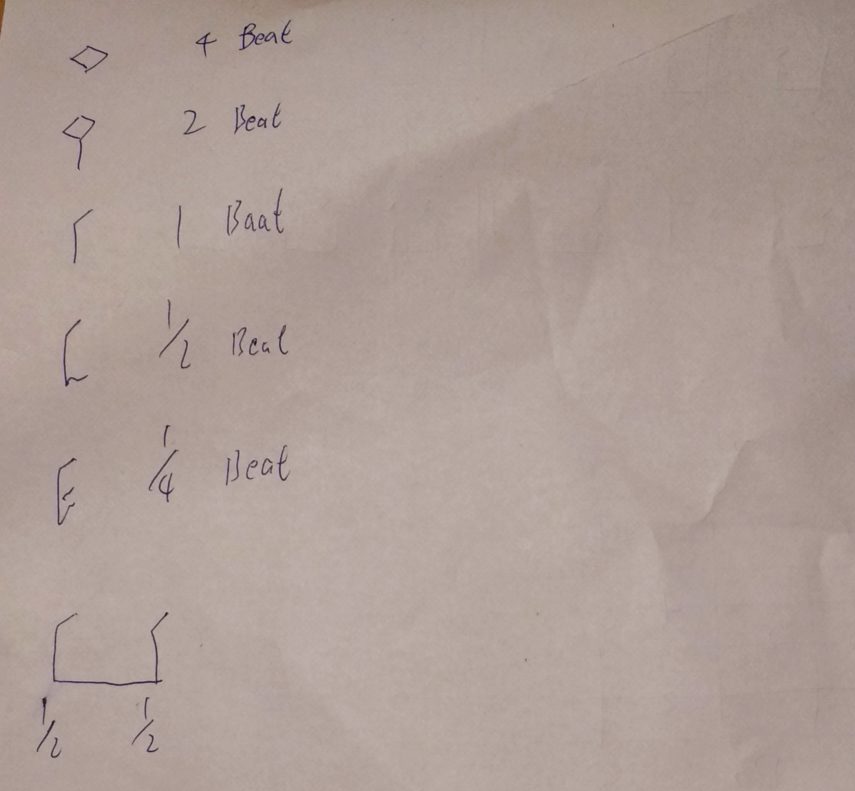
Muting Strings and Strumming
I found myself pressing the strings really hard trying to mute them. This was counter productive. You just need to lightly touch the strings without allowing them to press against the fret board to mute. Here’s an example of the wrong and right way.
Below is a picture of 8 notes (1 & 2 & 3 & 4 &) represented in muted form with an X. Notice here that the & is a note as well.

Playing these notes should sound as shown in the recording below. Its best to follow a slow metronome and count aloud: 1 & 2 & 3 & 4 &. Include the ‘and’ in the count.
Basic Strumming Position
With the Ukele, I had kind of learned to strum a little. But many videos I saw online failed to break down the complexity of strumming into its constituent parts. This meant that I was doing all kinds of things somewhat incorrectly. Lao Liu, my teacher, spend considerable effort teaching me how to do strumming. I want to show you what mistakes I was making and how I corrected them. The basic rhythm we used to follow the strumming was this one:
The following video shows the correct method of setting up your hand position and the strokes for strumming. The key elements here are to ensure that your forearm is resting one fist width from the elbow against the guitar body and that the wrist does not rotate or move. The wrist should be in a straight line with the forearm at all times and the entire forearm should pivot to strum. See the video below.
From here we can start to follow our rhythm to try more complex rhythm for strumming than just muted strings. Check out the next blog for Week 3 & 4 for this.
Simple Chords
From here, it was time to learn some basic chords as homework. The problem that I faced with chords was two fold. On one hand, my fingers were too soft. This meant pressing the metal strings was painful after a few minutes. My job at home was strengthening my fingers to that callouses would form and make it easier form me to press the cords. The second problem was switching between chords. Lao Liu taught me how to switch between three chords: C, A-Minor and E. See below the fingering for these three chords.
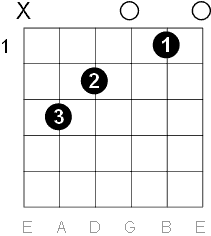
IMAGE SOURCE: https://www.guitar-chords.org.uk/
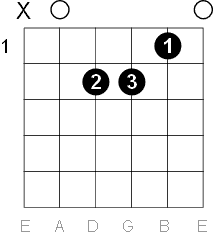
IMAGE SOURCE: https://www.guitar-chords.org.uk/
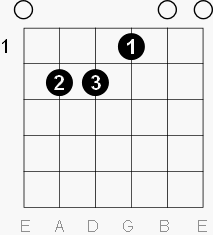
IMAGE SOURCE: https://www.guitar-chords.org.uk/
Starting from the C chord we can slide Finger 2 and finger 3 a little to bring us to A-minor chord. From A-minor we can go to E chord by lifting all three fingers and shifting them up one string. Building muscle memory for this was one of my jobs at home. You can see in the video below how this is done.
